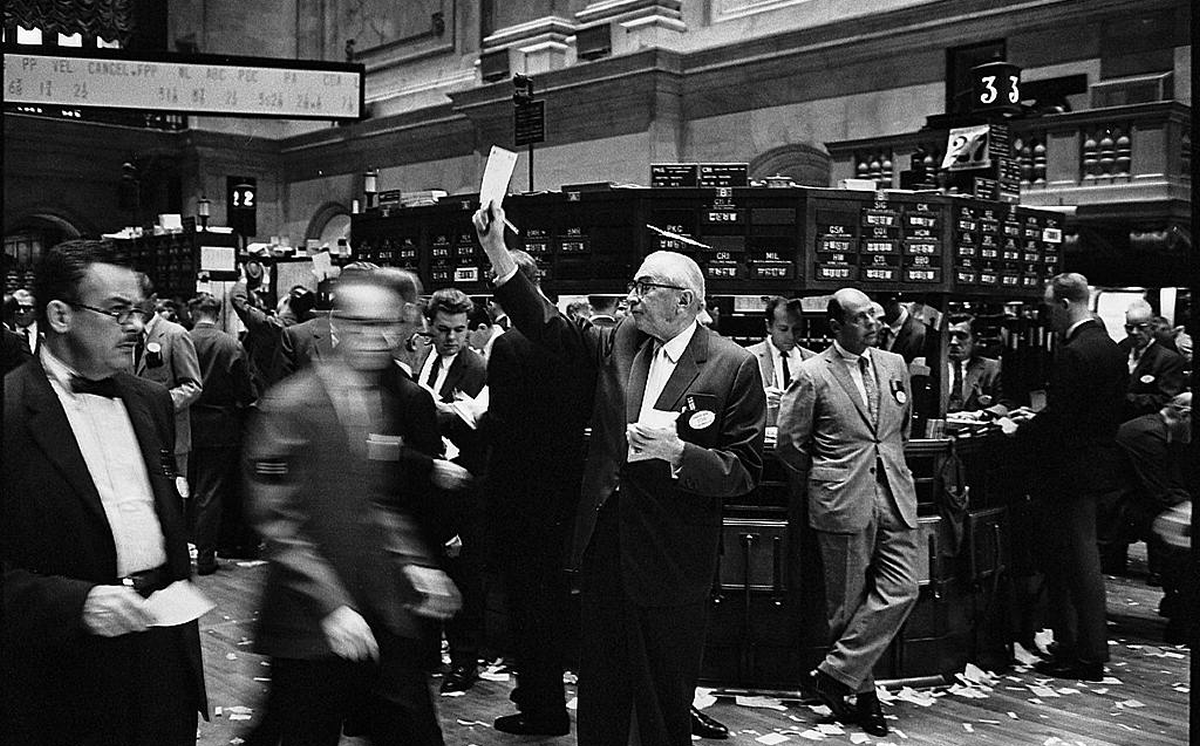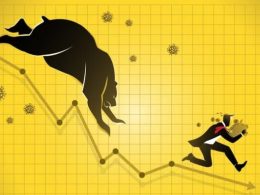by Jurrien Timmer, Director of Global Macro, Fidelity Management & Research Company
Setting Boundaries (for a new trading range)
In the never-ending pursuit of price discovery, we know a few more things since the V-shaped recovery took us back to within 3% of the February all-time highs. One: higher bond yields (led by higher term premia) are causing indigestion again, as they should per the Fed model. Two: the hawkish tariff talk is back, putting renewed pressure on equities and the dollar. Three: while earnings estimates have been marked down (from 12% growth in 2025 to 7%), that only discounts a moderation but nothing worse. Meanwhile, the forward P/E is back near a cycle high of 21x.
This tells me the following: we are no longer priced for an adverse outcome, even though risks remain on several fronts. In my view, that puts a ceiling on how far the market can rally from here, while leaving us open to some downside risks, until that fiscal put is back in the money.

Out of the Money Put
While the Fiscal Put was exercised when stocks were down 20% (by delaying retaliatory tariffs for 90 days), that Put is now well out of the money following the 20% price recovery. That suggests that while the lower boundary for this market correction may have been established, so has the upper boundary (given that the tariff talk becomes more hawkish up here, while the Fed model and weaker dollar force equity valuations to correct).

It’s a damned-if-you-do market, with either rising yields pushing high equity valuations down, or hawkish tariff talk pushing growth expectations down.
Rangebound for 2025
All this puts me firmly in the trading range camp in terms of what the next 6-12 months will bring. I suspect that this range might be defined by the April low of 4835 as the lower boundary, and the recent highs (6000) as the upper boundary, with the possibility that stock pries could briefly overshoot in either direction. Think 2018 or 2015 as potential analogs.

A more rangebound market was always my default scenario for 2025 following two strong P/E-driven years, but now it has become my best-case scenario.
A New Bear Cycle?
If I am right about this range-bound forecast, it suggests that the cyclical bull market which started in October 2022 may well have ended in February 2025 at 30 months old, and that a new modest bear market is now underway. Bear markets consist of both a price and time element, and if this one lasts 6-12 months it would meet both conditions. Again, 2015 and 2018 come to mind, with 1968-1970 as a worst case scenario.

Earnings & Valuation
In terms of the interplay between earnings and valuation, I could see a scenario unfold in which earnings growth stabilizes here in the mid-single digits, while P/E-multiples compress driven by the Fed model and possibly foreign capital repatriation. That suggests that this unfolding bear cycle could be mostly time-based, and might not be associated with an economic recession.

Investment Clock
If earnings hold up even though financial conditions tighten (which they would if rates move higher and P/E multiples move lower), then we could stay in the upper right quadrant of the investment clock. That’s the grey zone where valuations and earnings offset each other. By definition it covers most trading ranges. The best zone is the upper left (where earnings growth is amplified by P/E-expansion) and the worst is the lower right (where earnings declines are amplified by tightening financial conditions).

1968-1970 Analog
Note that during the 1968-1970 bear cycle (which remains one of the more compelling fundamental analogs to today from both a cyclical and secular perspective), the clock did eventually go into that worst-case scenario. Hopefully, we can avoid that quadrant in 2025.

Revenge of the Term Premium
Long-term interest rates remain a key driver for equities here. No sooner did the stock market recover its losses and the 10-year Treasury yield pushed back into the 4.5-5.0% range last week (with the long bond already above 5%). The term premium on tens is now 88 bps and rising. Were it not for the very contained inflation expectations, we could well be at 5% already.

Mean Reversion
At 88 bps, the term premium is well above the financial repression era lows of the past decade, but it remains well below levels that we might consider normal over the past 5 decades. My guess is that the term premium is on its way to 150 bps or so, which depending on what happens to inflation expectations could push the 10-year well above 5%. The stock market will not like that, and neither will the dollar.

Fed Model
Why does this matter? For two reasons. One, as the chart shows below, the higher yields go the more correlated bonds tend to become to equities. The purple dots show the correlation of long-term Treasuries to the S&P 500 (going back to the 1930’s) and the black circles highlight the period since 2020. The Great Moderation Era of the 2000’s and 2010’s is likely over, and we are back to the more traditional era of the 1960’s-1990’s.

Two, the more correlated bonds are to equities, and the more competitive bond yields become to equity yields, the more impact those rising yields have in forcing equity valuations to correct. That’s at the heart of the Fed model, favored by the Maestro Alan Greenspan during the 1980’s. The model only works when rates are not being suppressed by central banks through zero interest rate policy (ZIRP) and Quantitative Easing (QE).

The chart above and the DCF grid below both indicate that a return to 5% for the risk-free rate could force the equity P/E-multiple to drop 3-4 points from here. That would be a 15-20% haircut to price, before adjusting for the offset from earnings growth. That’s consistent with the trading range thesis.

No Fed Put
With the long end of the curve driving the bus in this emerging era of fiscal dominance, monetary policy has become a bit less urgent, it seems. The Fed is on hold after cutting rates 100 bps in 2024, even though inflation expectations (per the TIPS forward curve) remain contained. But note in the chart below that there are leads and lags between money supply growth (monetary inflation), the CPI (price inflation), and Fed policy.

In 2020 it was M2 that soared first, followed a year later by the rising CPI, followed another year later by the Fed. Now inflation is easing, again followed by the Fed. But wait a minute, M2 is already back to the 2020 highs. Will the CPI follow, forcing the Fed to stop easing or even tighten?
1968-1970 Analog
Is there a policy error in the making, should the Fed continue to cut rates? I don’t have the answer, but it is exactly this scenario that makes the 1968-1970 a viable analog. The Fed pivoted in 1966-1967 even though inflation had not been tamed, and while it created a reprieve for the stock market (and caused a false inversion signal in the yield curve), the chickens came home to roost in 1969. The Fed had to tighten again and the economy fell into a recession, producing a 37% bear market for US equities. The 1968 peak was not only a cyclical top but the secular peak as well.

Gold and Bitcoin get the Memo
The rising global money supply has not gone unnoticed by either gold or Bitcoin. Below we see that Gold is recovering from its brief correction as global M2 makes a new high at $111.9 trillion.

And Bitcoin, which lagged gold for a while as its Dr Jekyll split-personality took over by following equity prices lower, reached a new high as well.

That means that both players on the coveted store-of-value team are now on the field, as their Sharpe Ratios have almost converged. Whether Bitcoin can hold up here as the stock market rolls over remains to be seen of course. If Bitcoin can decouple from equities, it would be an important milestone.

TAMA (There Are Many Alternatives)
What to do in a rangebound 2025 when risk premia for both equities and bonds are on the rise? Fortunately, there are many places to hide these days, namely in international equities and alts. Plus, it’s plausible that if the S&P 500 drops from here, it will provide a temporary reprieve for bonds. The performance quilt below shows gold, Bitcoin, EAFE, ex-US, EM, equity long/short, and cash in the lead on a 3-month basis. That seems like a good place to start, as far as I am concerned.

This information is provided for educational purposes only and is not a recommendation or an offer or solicitation to buy or sell any security or for any investment advisory service. The views expressed are as of the date indicated, based on the information available at that time, and may change based on market or other conditions. Opinions discussed are those of the individual contributor, are subject to change, and do not necessarily represent the views of Fidelity. Fidelity does not assume any duty to update any of the information.
1188536.20.0
Copyright © Fidelity Management & Research Company















